Introduction
Our Hand Structure
What happen after tendon injury?
What Are The Causes?
Symptoms
First Aid
Physical Examination
Treatment
Surgery
Rehabilitation after Surgery
Outcome
Introduction
Every day we use our hands for working and managing our daily living. Our hands are actually exposed to different risks of injury.
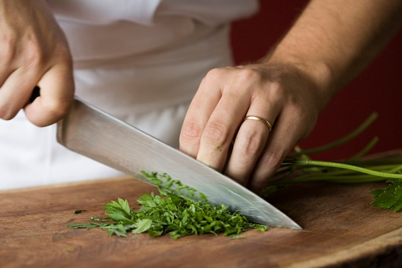
A cut on the our fingers, hand, wrist, or forearm can result in damage our hand tendons which control movement in our hand and fingers. A flexor or extensor tendon injury can result in failure to bend or extend our fingers or thumb.
Our Hand Structure
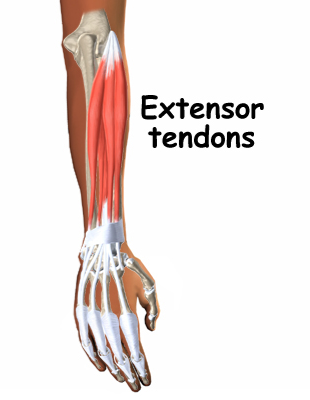
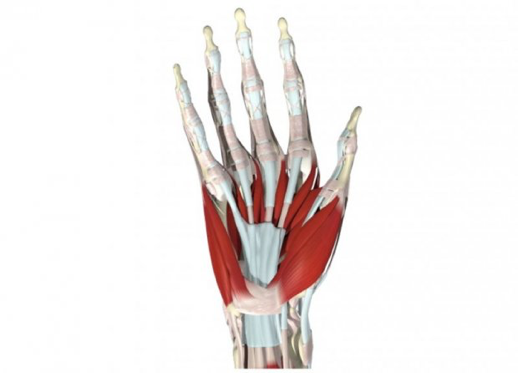
Tendon connect muscle to bone. When muscles contract, tendons pull on bones. This causes hand and finger extension or flexion motions.
The tendons on the back of our hand straighten (extend) fingers. These are known as extensor tendons. The tendons on the palmar side bend (flex) fingers. These are known as the flexor tendons.
Both flexor and extensor muscles that move the fingers and thumb are mainly located in the forearm. Long tendons extend from these muscles through the wrist and attach to finger bones. When we bend or straighten our finger, the flexor tendons slide through tunnels, called tendon sheaths, that keep the tendons in place adjacent to the bones.

What happen after tendon injury?
A torn or cut tendon in the forearm, at the wrist, in the hand, or along the finger will make it impossible to bend or extend our finger joint. A cut injury may injure a flexor or extensor tendon because tendons are very close to the surface of the skin. The tendon can be cut into two pieces.
Our tendons like a rubber band, are under tension. If a tendon is torn or cut, the ends of the tendon will pull far apart by its muscles, it is impossible for the tendon to heal on its own. Nerves and blood vessels of the fingers are also very close to the tendons. A cut may also damage them and results in loss of sensation or numbness on one or both sides of the finger. If blood vessels are also cut, the finger may became ischemia (no blood supply). This requires immediate surgery.
Hand tendons may be partially cut or torn. It may still be possible to bend or extend our finger, but not completely. These types of tears can be difficult to diagnose.
What Are The Causes?
In addition to cuts on the arm, hand, or fingers, certain sports activities can cause tendon injuries. These injuries often occur in football, wrestling, and rugby. "Jersey finger" is one of the most common of these sports injuries. It can happen when one player grabs another's jersey and a finger (usually the ring finger) gets caught and pulled. The tendon is pulled off the bone. In sports that require a lot of arm and hand strength, such as rock climbing, tendons and/or their sheaths can also be stretched or torn. A basketball hit onto an extending finger can result in mallet finger due to rupture of extensor tendon from finger bone.
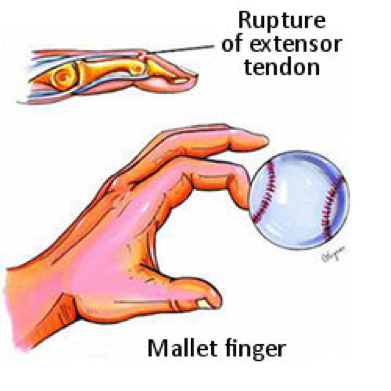
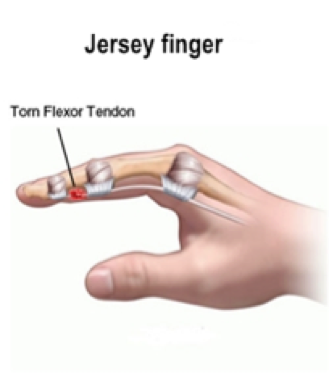
Certain diseases like rheumatoid arthritis may weaken the flexor tendons and make them more likely to tear. This can happen without warning or injury — a person may simply notice that his or her finger no longer bends, but cannot recall how it could have happened.
Symptoms
There may be an open wound, such as a cut, on the hand, wrist or forearm. The finger fails to bend or extend. There will be pain when try to move the finger. There will also tenderness at injury site during palpation.
First Aid
You need to see a doctor as soon as possible if your fingers are injured. It is a must if the finger is jammed and you cannot bend or straighten your finger, or numbness in your finger tip. Before you can reach your doctor, you can:
- Tightly wrap your wound with a clean cloth or bandage to slow down the bleeding.
- Elevate your hand to keep it higher than your heart level.
Of course you need to see a doctor as soon as possible.
Your doctor may first clean and treat any wounds that are not deep. You may need a tetanus injection or antibiotics to prevent infection.
Physical Examination
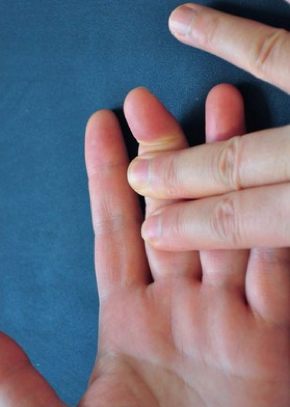
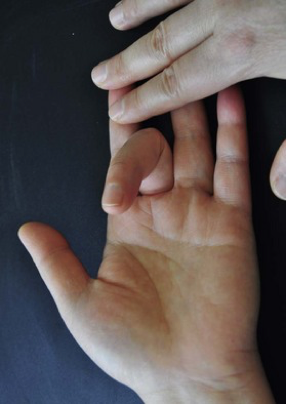 During physical examination, your doctor will ask you to bend and straighten your fingers. To test your finger strength, your doctor may ask you to bend your injured finger while he or she holds the other fingers down flat. Your doctor may test your hand’s sensation and circulation to the fingers. X-ray may be necessary to see if there is any fracture
During physical examination, your doctor will ask you to bend and straighten your fingers. To test your finger strength, your doctor may ask you to bend your injured finger while he or she holds the other fingers down flat. Your doctor may test your hand’s sensation and circulation to the fingers. X-ray may be necessary to see if there is any fracture
Treatment
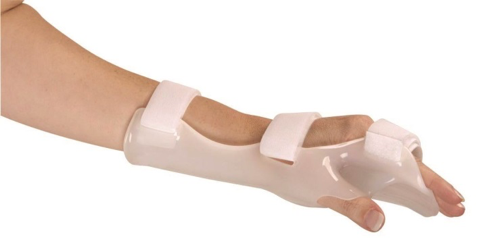
Immobilization: your doctor may place your hand in a splint for protection.
Tendons cannot heal unless the ends are touching, which does not occur with a complete tear. In most cases, a cut or torn tendon must be repaired by a doctor. This requires surgery.
Surgery is usually performed within several days after an injury. In general, the sooner surgery is performed, the better recovery will be. If the injury is restricting blood flow to your hand or finger, an urgent surgery is necessary .
Surgery
Tendons can be injured in different ways — such as straight across, at an angle, or pulled off from bone — there are many different methods for tendon repair.
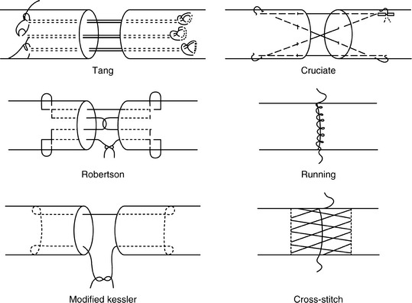
After surgery, your doctor may apply a dressing and splint. Many doctors use a plastic type of static or dynamic splint to protect the tendon repair. After flexor tendon repair, your fingers and wrist will be placed in a bent position to keep tension off the repair. However, after extensor tendon repair, your fingers and wrist will be place in more extended position.
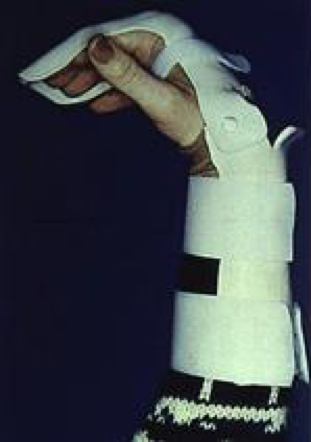
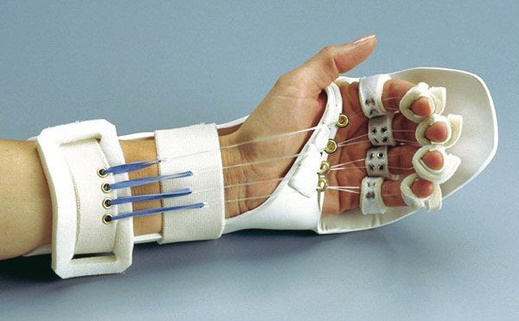
After flexor tendon repair, a splint is applied to limit movement and help the tendon heal.
Rehabilitation after Surgery
It takes 6-8 weeks before the repaired tendon heals. At that time, your hand is strong enough to use without protection. It may take another one month or so before your hand can be used freely as normal.
After surgery, rehabilitation therapy will start. Specific rehabilitation program will help you reduce swelling and gradually regain motion and function. Stiffness after surgery is common, but it usually responds to therapy.
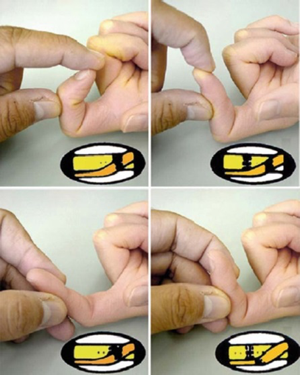
(Finger mobilization exercise)
Proper rehabilitation program including swelling control, splint wear and graded exercise is very important for good recovery.
Partially torn tendons may not require surgery for good results. The same splinting and exercise programs can be very effective for patients with partial tears. However, This nonsurgical treatment option is appropriate only after the doctor has explored the wound to accurately assess the extent of the injury.
Outcome
Despite surgery and extensive therapy, some patients may have long-term stiffness after flexor tendon injuries. Sometimes, a second surgery may be required to release scar tissue and to help the patient regain motion. In general, tendon surgery results in good return of function and high patient satisfaction.
The Hong Kong Society for Surgery of the Hand